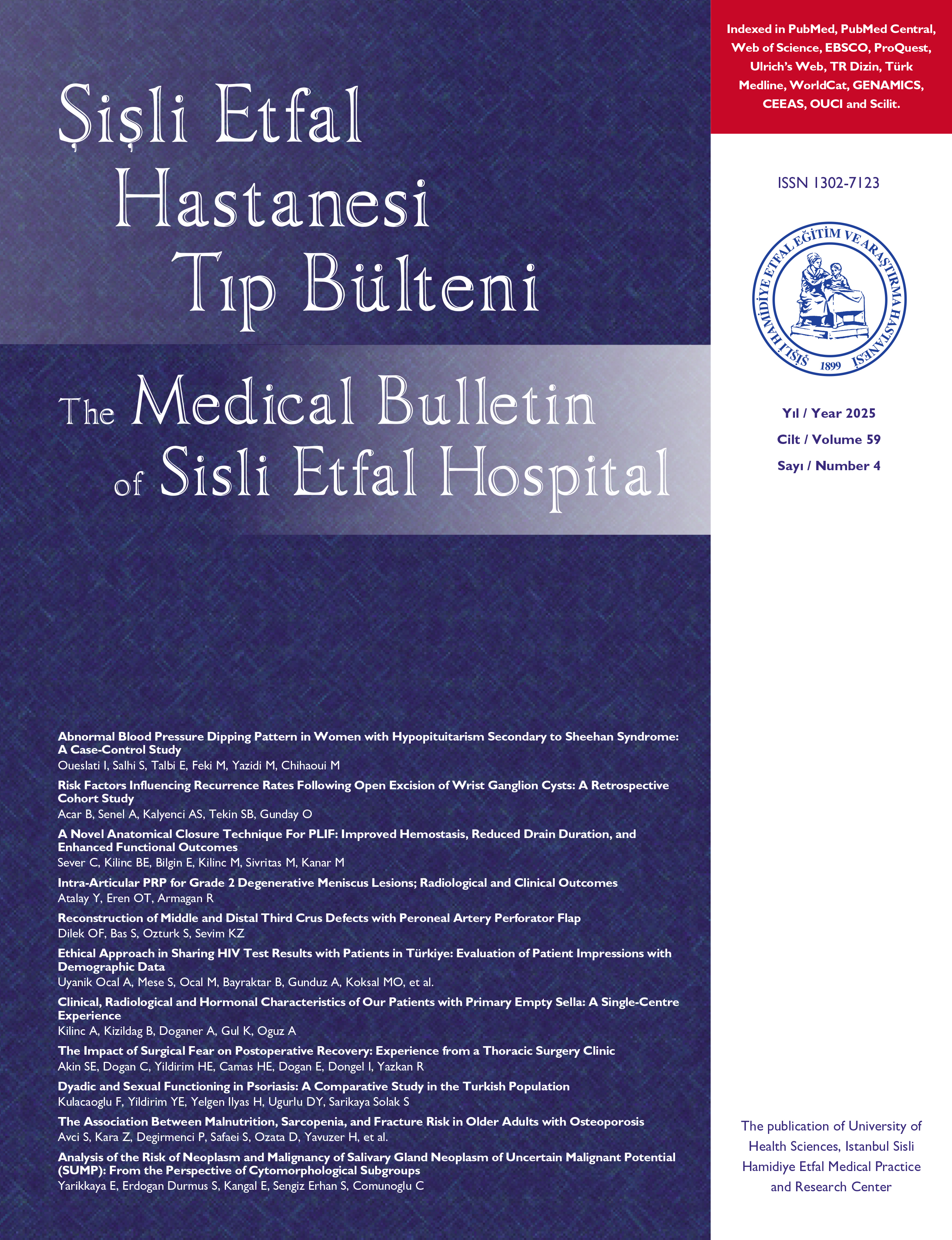
Guillain Barre Syndrome: A Single Center Experience
Onur Akan, Canan Emir, Cihat Örken, Serap ÜçlerDepartment of Neurology, Okmeydanı Training and Research Hospital, Istanbul, TurkeyObjectives: To investigate the clinical, electrophysiological and epidemiological features of the patients who were diagnosed as Guillain Barre Syndrome (GBS) in our clinic.
Methods: The clinical and demographical properties of 30 patients with GBS who were hospitalized in our neurology clinic between March 2013 and August 2017 were retrospectively examined in this study. Patients were divided into two groups according to the requirement of stay in the intensive care unit (ICU).
Results: Patients were between 18-71 years range with 46.9 and 19.61 mean age. Seven of 30 patients (23.3%) were female, and 23 of them (76.7%) were male. Males were more dominant in the ICU (-) group (81% and 62%). A recent infection was found in 86.7% of patients. Upper respiratory tract infection (URTI) was more common in ICU (+) group whereas lower respiratory tract infection (LRTI) and acute gastroenteritis (AGE) were more common in the ICU (-) patients (p=0.007). Lower limb weakness was more frequent in the ICU (+) group (p=0.011). ICU (+) patients were lack of diplopia and dysarthria. Ataxia and dysphagia were relatively frequent in the ICU (+) group. Electrophysiological examinations revealed demyelinating polyneuropathy (26.7%), acute axonal polyneuropathy (30.1%) and acute sensorial polyneuropathy (13.3%). Demyelinating polyneuropathy was more common in the ICU (-) group, whereas acute motor and sensorial polyneuropathy (AMSAN) was more frequent in the ICU (+) group. In this study, 26.7 % of study patients required mechanical ventilation, and mortality rate was 6.8 %.
Conclusion: URTI in ICU (+), LRTI and AGE in ICU (-) patients might be major trigger factors of GBS. Ascending weakness, dysphagia and ataxia was more frequent in ICU (+) GBS patients. Demyelinating PNP was predominant in the ICU (-) group, whereas AMSAN was more frequent in the ICU (+) patients. Multicenter randomized studies would be more useful for highlining the epidemiology of GBS.
Keywords: Demographical features, electrophysiology; Guillain Barre Syndrome.
Guillain Barre Sendromu: Tek Merkez Deneyimi
Onur Akan, Canan Emir, Cihat Örken, Serap ÜçlerDepartment of Neurology, Okmeydanı Training and Research Hospital, Istanbul, TurkeyAmaç: Guillain Barre sendromu (GBS) tanılı hastaların epidemiyolojik, klinik ve elektrofizyolojik özelliklerini gözden geçirmek
Gereç ve Yöntem: Nöroloji Kliniğinde Mart 2013 ve Ağustos 2017 tarihleri arasında GBS tanısıyla yatarak tedavi gören 30 hastanın klinik ve demografik verileri retrospektif olarak incelendi. Hastalar yoğun bakım ünitesinde (YBÜ) yatış durumuna göre iki gruba ayrıldı.
Bulgular: Toplam 30 hastanın 7si (% 23.3) kadın, 23ü (% 76.7) erkek olup yaş ortalaması 46.9 ±19.61 idi. Erkek cinsiyeti YBÜ (-) grupta daha baskındı (%81∼%62). Hastaların % 86.7sinde GBS öncesi enfeksiyon öyküsü mevcuttu. YBÜ (+) grupta üst solunum yolu enfeksiyonu (ÜSYE), YBÜ (-) grupta alt solunum yolu enfeksiyonu (ASYE) ve akut gastroenterit (AGE) oranları fazla bulundu (p =0.007). YBÜ (+) grupta alt ekstremitelerden başlayan güçsüzlük daha yaygın idi (p =0.011). YBÜ (+) olanlarda diplopi ve dizartri görülmezken ataksi ve disfaji oranı görece daha yüksek bulundu (p =0.001). Elektrofizyolojik incelemede % 26.7 oranında demiyelinizan polinöropati, % 30.1 oranında akut aksonal polinöropati, % 13.3 oranında akut sensoriyal aksonal polinöropati saptandı. YBÜde yatanlarda akut motor ve sensorial nöropati (AMSAN) ön planda iken YBÜ(-) grupta demiyelinizan polinöropati daha sıktı (p =0.04). Olguların % 26.7sine mekanik ventilasyon uygulandı. Ölüm oranı % 6.8 bulundu.
Sonuç: YBÜ(+) GBS hastalarında ÜSYE, YBÜ (-) olanlarda AGE ve ASYE ana tetikleyici faktör olarak görünebilir. Asendan güçsüzlük, disfaji ve ataksi oranı YBÜ (+) GBS hastalarında görece daha yaygındır. YBÜ (-) grupta demiyelinizan polinöropati, YBÜ (+)de ise AMSAN ön plandadır. Çok merkezli randomize çalışmalar GBS epidemiyolojisi konusunda daha aydınlatıcı olacaktır. (SETB-2018-01-02)
Anahtar Kelimeler: Demografik özellikler, elektrofizyoloji, Guillain Barre sendromu
Manuscript Language: Turkish



















